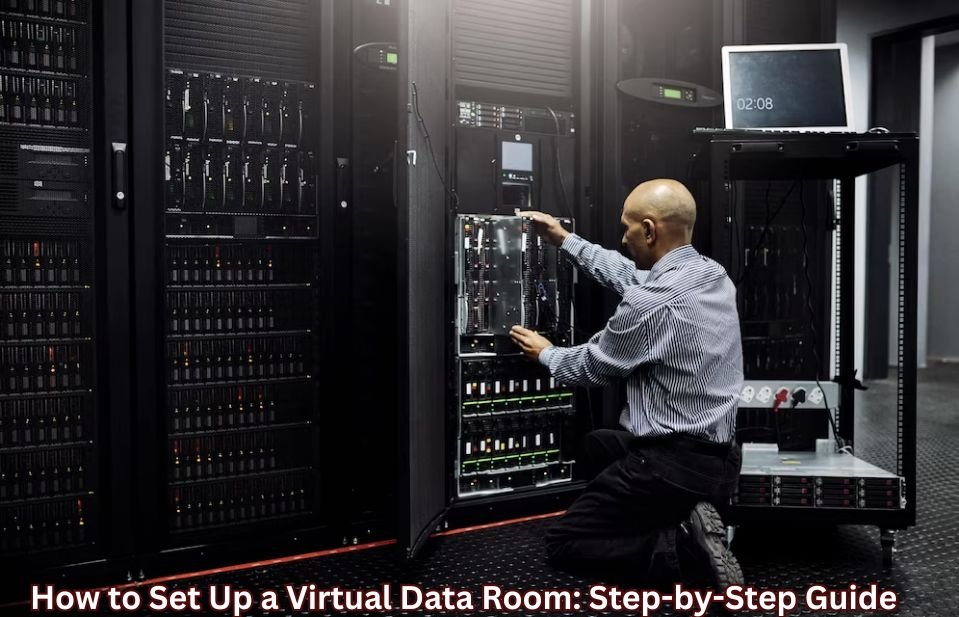Learning the art of safe and efficient data administration is essential in the dynamic world of corporate operations. There is a growing need for a detailed manual on “how to setup a virtual data room” as more and more businesses move to virtual environments. The foundation of digital information governance is a Virtual Data Room (VDR), which provides a safe refuge for essential documents. This extensive tutorial takes you on a step-by-step trip through creating a VDR customized to your organization’s requirements. This guide will give you the confidence to navigate the digital landscape and ensure your virtual data room meets and exceeds the demands of a dynamic and data-centric business environment, from setting goals and selecting the best provider to putting strict security measures in place.

Comprehending the Fundamentals: A Virtual Data Room (VDR): What is it?
Before delving into the configuration procedure, let us clarify the definition of a Virtual Data Room (VDR). A virtual document repository (VDR) is a safe online location where confidential data, including financial records, legal paperwork, and intellectual property, can be shared and stored. It acts as a centralized platform that promotes a safe and regulated environment by enabling authorized individuals to access, review, and collaborate on vital data.
Step 1: Specify Your Goals and Purpose
Start by summarizing your virtual data room’s primary goals. Determine the kind of data you plan to store, the access levels that various users must have, and any particular security or compliance requirements that must be followed. This first step establishes the framework for a customized and effective VDR configuration.

Step 2: Select the Proper Provider of Virtual Data Rooms
Your data management plan’s effectiveness depends on choosing a reliable virtual data room supplier. Make careful research, considering aspects like scalability, customer support, security features, and user interface. A few well-known VDR suppliers are Firmex, Intralinks, and Merrill.
Step 3: Configure Permissions and User Roles
Setting user roles and permissions is a critical next step after selecting a VDR provider. Determine which users can access particular folders or documents and adjust permissions according to the user’s position within the company. This fine control guarantees data security and confidentiality.
Step 4: Arrange and Submit Your Files
A functional virtual data room requires effective organization. Organize your documents into sensible folders to facilitate users’ finding of information. Drag-and-drop functionality is available on most VDR platforms, which expedites the document upload procedure. Make sure version control is implemented and that sensitive data is encrypted.
Step 5: Put Security Mechanisms in Place
Improve the safety of your virtual data room by putting strong security measures in place. This covers two-factor authentication, frequent security audits, and data encryption in transit and at rest. Keep up with industry compliance guidelines to ensure your VDR complies with legal requirements.
Step 6: Provide User Training
Educate your team about the features and procedures of the virtual data room efficiently. Give thorough instructions on how to use the VDR’s document access, sharing, and collaboration features. This step is essential to optimize the advantages of your data room configuration and reduce the possibility of human error.

Step 7: Update and Maintain Consistently
Maintaining a virtual data room is a continuous process that requires constant setup. Update your VDR frequently with the newest features and security fixes offered by your preferred provider. Conduct recurring user access rights and document permissions evaluations to guarantee ongoing adherence to your company’s data management policy.
In summary
As we wrap up this extensive guide on virtual data room setup, we must emphasize the revolutionary effect this strategic move can have on your company’s operations. By carefully adhering to the suggested procedures, you strengthen the foundations of efficient collaboration within your company and create a safe and orderly digital environment. Implementing a virtual data room is an active investment in the expedited flow of confidential information, building stakeholder trust and enabling smooth decision-making procedures. It is not just a procedural checkbox.
Furthermore
With the changing digital world, having a correctly set up virtual data room gives your company a competitive advantage and the ability to handle data management challenges confidently. It’s not just about complying with regulations. In addition to the instant advantages of improved security and accessibility, a well-executed VDR puts your company in a position to quickly adjust to changing market demands and realize the total value of your data assets. Accept the future of data management, where learning to build a virtual data room is a crucial first step in creating a more robust, elegant, and cooperative company ecosystem.
Questions & Answers:
When starting the process of setting up a virtual data room, several questions may come up. We provide human-touch answers to frequently asked questions in this FAQ section, helping you navigate the complexities of the procedure. These answers aren’t your usual technical ones; they are meant to speak to you personally. They explain the importance of a virtual data room, what to look for when selecting a provider, and how easy it is to set up, thanks to the seamless customization and remote access. Consider this your helpful guide as you work through the complexities of setting up a virtual data room, one thought-provoking question at a time.
Q1: Why do I need a virtual data room, and how can it benefit my business?
A: A virtual data room (VDR) offers limited access and collaboration while serving as a safe sanctuary for your confidential data. Establishing a virtual document repository (VDR) improves data security, expedites document management, and promotes effective teamwork, partnerships, and stakeholder engagement.
Q2: What factors should I consider when choosing a virtual data room provider?
A: It’s essential to choose the correct VDR supplier. Consider solid security measures, intuitive user interfaces, scalability, and prompt customer assistance. Conduct extensive research to ensure the vendor satisfies your business requirements and industry standards.
Q3: Can I customize user access in a virtual data room, and how is it done?
A: Definitely! A crucial first step in a VDR is customizing user access. Roles and permissions can be set according to the duties assigned to the user. Customizing access guarantees data security and confidentiality, whether read-only access, document download permissions, or full collaboration rights.
Q4: Is the process of setting up a virtual data room time-consuming?
A: Setting up a virtual data room is getting easier. It’s an easy process with user-friendly interfaces and drag-and-drop functionality. The secret is to specify your goals and scope early in the planning process, which will help the setup go more smoothly.
Q5: How often should I update my virtual data room, and why is it necessary?
A: To keep security at its best, regular updates are essential. Update your VDR software to reflect the most recent security patches and features the vendor offers. By doing this, you can be confident that your virtual data room will withstand changing cyberattacks.
Meta Description:

